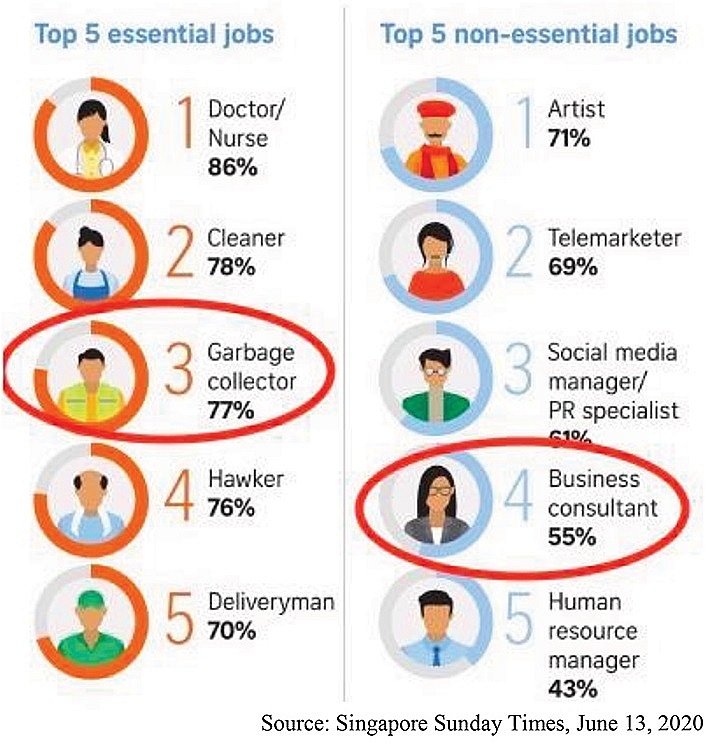What digital transformation really means for companies
 |
| Colin Blackwell - Founder, Enablecode and chairman of HR Committee Vietnam Business Forum |
A company owner has a business that has been doing well for many years but notices that their competitors are gaining an inexplicable advantage. Their competitors start selling cheaper than what appears to be possible and are gaining new customers by changing the rules of business. The owner correctly identifies that digital transformation is needed, so gives the task to their most trusted executive to carry out.
The executive knows their existing business may be old fashioned, but still works. Performance may not be great, but they are simply continuing a trusted way, so it is not the executive’s fault. Change could work, but there is a real risk that it will make things worse, which would then be the executive’s fault. Thus, the executive is caught in a dilemma – they must do something but not risk too much.
The executive asks around their friends and does a few internet searches to find a good place to start. As the topic seems complex, it seems sensible to bring in an expert. Now the executive must reassure the owner that they have chosen the right expert. The worst thing that could happen is to choose the wrong expert and then the executive would be rightly blamed when the transformation later goes wrong.
So how to make a safe choice? Simple – bring in a large, famous international consulting company. The consulting firm’s reputation is so strong that no matter what happens, the executive cannot be blamed for choosing them.
The famous consulting company is then asked to come in and advise what change is needed. The consultants know well that the executive will hire them, as their job depends upon it. They also know that the executive does not really wish to risk change and does not care about spending large amounts of the owner’s money.
Thus, the consultants prepare a proposal full of pretty pictures of trees and smiling people and add in every buzzword they can think of for a million US dollars. The executive persuades the owner to say yes and the consultant is given the inevitable go ahead.
For $1 million, the consulting company must be active, so they must appoint a visibly large team to the project. To maximise their profit margin, they assign inexpensive junior interns and people from their regional outsource centre, usually in India.
Now I hasten to add that the Indian they appoint may be knowledgeable, but through no fault of their own, they cannot be expected to understand the intricacies of Vietnamese business culture after being here for only a few days. Likewise, the intern may be a very nice and clever person, but through no fault of their own, lacks the real-world business experience to make sense of the client company.
This consulting team then starts by asking the client company’s line management many time-consuming questions, with the answers then summarised back to the client. It follows the old cliché “lend me your watch and I will tell you the time”. This is used to then make a massive PowerPoint presentation with every buzzword known to humanity, flowcharts copied from business journals plus, of course, more pictures of computer circuit boards and random people shaking hands. For $1 million, the presentation when printed should be thick enough to beat a small rodent to death with.
To sum up, the consultant has their million US dollars, the executive has “done something” without disaster, nobody has to do any real change, it is all nobody’s fault, so they all live happily ever after.
 |
The original problem of being outperformed by competitors just gets worse. Time and money were wasted and now the problem still needs solving, but with less time and money available. So, how could this have all been done differently? A good outcome is always possible, so let us retell the story more positively.
Again, a business owner notices their company falling behind in the way described previously. Their correct conclusion is that while their competitors’ actions are unexpected, they are not magic. Their competitors are people just like them, so if their competitors can do it, so can they – or even do it better.
The owner calls in their trusted executive and they agree together that real change is needed. They will share the responsibility and the owner acknowledges there is an inevitable risk, but this will not be automatically the executive’s fault. They agree that they will have to question the most fundamental assumptions they had about their business and be brave to make the needed changes.
To get started, they have a bit of fun pretending to be prospective new customers of their competitors. These mystery shoppers highlight a few things that their competitors do better than them. It is still an unknown how the competitor is doing it, but the challenge is at least clearly defined.
Realising that outside expertise is needed, they decide to do their research on what type of consultants are available that can produce real, practical, measurable results. They quickly discover that business consultants have given themselves a bad reputation in general.
A recent survey published in the Singapore Sunday Times showed that the public thought garbage collectors were performing a more essential job than business consultants.
Proceeding with warranted caution on alleged experts, the executive uses their personal network to find consultants that understand the Vietnamese business culture and have a proven track record in making practical improvements in similar companies. Listening to the good consultant’s explanations of the best practice the executive’s competitors are using, the executive realises that the needed change is a combination of smaller, practical, and achievable improvements.
Before choosing a consultant, it is also a good idea to challenge a prospective consultant to give you references of past clients they have successfully made practical improvements for in Vietnam.
These will vary from company to company, but typical practical improvements involve the following:
- Using the full potential of social media to market your company to new customers;
- Implementing a modern e-commerce option with a great customer experience;
- Reducing costs and improving efficiencies by automating or outsourcing support functions;
- Using new technology to have a better product or service for your customers delivered faster, cheaper, and more profitably;
- Improve internal controls to reduce fraud and have more real-time visibility of the company’s performance;
- Align employees with the new culture by removing some, retraining all, and hiring others;
- Introducing digital platforms for supply chain, purchasing, and logistics; and
- Integrate existing technology systems to reduce errors and using the cloud more to provide greater system security and availability.
Here, it is the executive’s job to draw together the individual practical improvements into a broader strategy. If it makes everyone feel better about themselves, call this collection of practical steps a digital transformation.
Shareholders love it and the buzzwords impress young attractive people at business networking functions. But most importantly, you will have made a real change that delivers real business performance.
What the stars mean:
★ Poor ★ ★ Promising ★★★ Good ★★★★ Very good ★★★★★ Exceptional
Themes: Digital Transformation
Related Contents
Latest News
More News
- Ho Chi Minh City hits $8.37 billion in FDI (December 29, 2025 | 08:28)
- Tax sector wraps up 2025 and sets priorities for next year (December 25, 2025 | 14:00)
- Heavy industries set for pilot greenhouse gas quotas (December 25, 2025 | 10:00)
- $250 million deal targets women-owned SMEs, sustainable agriculture (December 22, 2025 | 17:40)
- UOB sees Vietnam growth easing in fourth quarter (December 22, 2025 | 17:39)
- Government moves to establish International Financial Centre (December 21, 2025 | 21:00)
- Vietnam's IFC to target global investment flows (December 21, 2025 | 18:00)
- Ha Tinh breaks ground on major Vingroup industrial and energy projects (December 19, 2025 | 18:24)
- EVN launches major power infrastructure projects nationwide (December 19, 2025 | 18:17)
- VAL inaugurates second production line to meet domestic animal feed demand (December 19, 2025 | 16:37)

 Tag:
Tag:




















 Mobile Version
Mobile Version